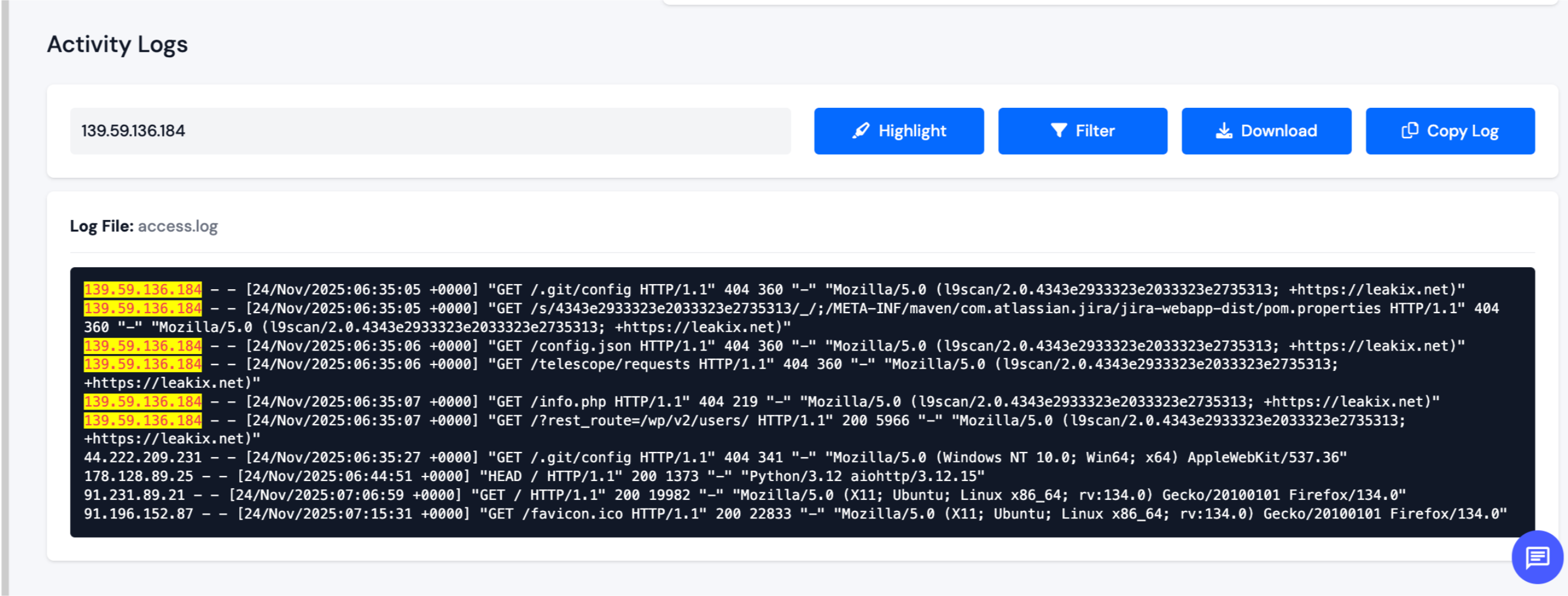Application Logs
Application logs contain all information about incoming requests to your site. There are two types of application logs: "Access logs" and "Error logs".
Access logs collect all information about "successful" requests served by your server.
Error logs collect all information about "Failed" requests served by your server. These requests include 404 errors, 500 errors, and similar other errors on the site's code.
Logs are useful when your site is experiencing a technical issue. Logs allow you to identify the root cause of the errors so that you can take appropriate actions to solve the issue.
You can check application logs in the ServerAvatar web app itself. Follow the steps given below to check application logs in ServerAvatar.
Step 1: First, log in to your ServerAvatar Account.
Step 2: Click on the Server Dashboard button.

Step 3: Now, you will see the option Applications on the left-hand sidebar of the Server Panel. Click on "Applications".
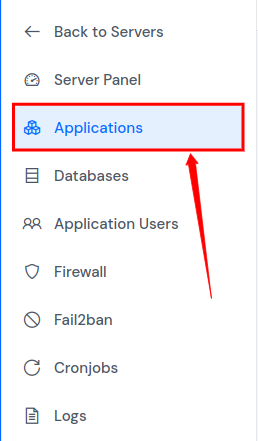
Step 4: Now, you will see the Applications table like the below image.

Step 5: Click on Application Name or Dashboard icon to access the application panel.

Step 6: You will see the Application Logs option on the left-hand sidebar of the Application Panel. Click on Application Logs.
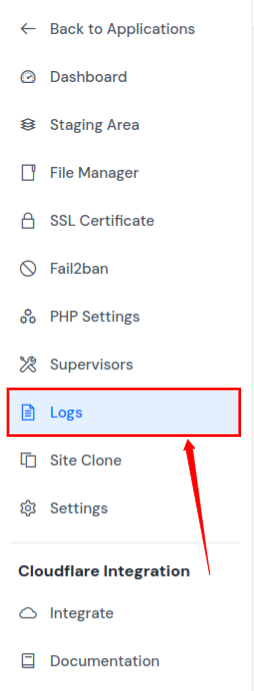
Step 7: You will see the Application Logs page like the image below.
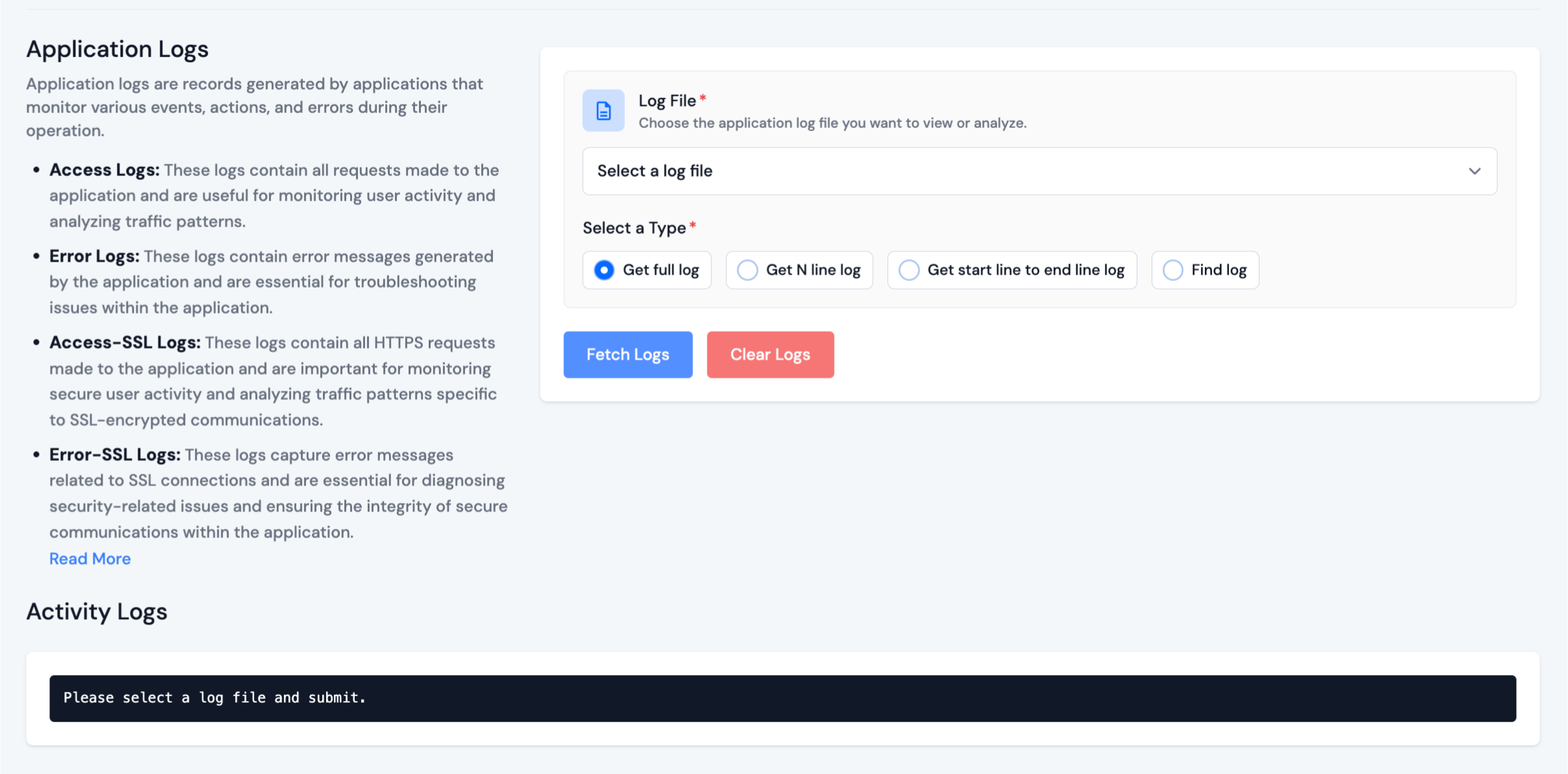
Step 8: You can select the log file you want to fetch logs and Select a type of data you wish to fetch.
- If you want to retrieve all log entries from the file, select the Get full log option. Once selected, click on the Fetch Logs button.
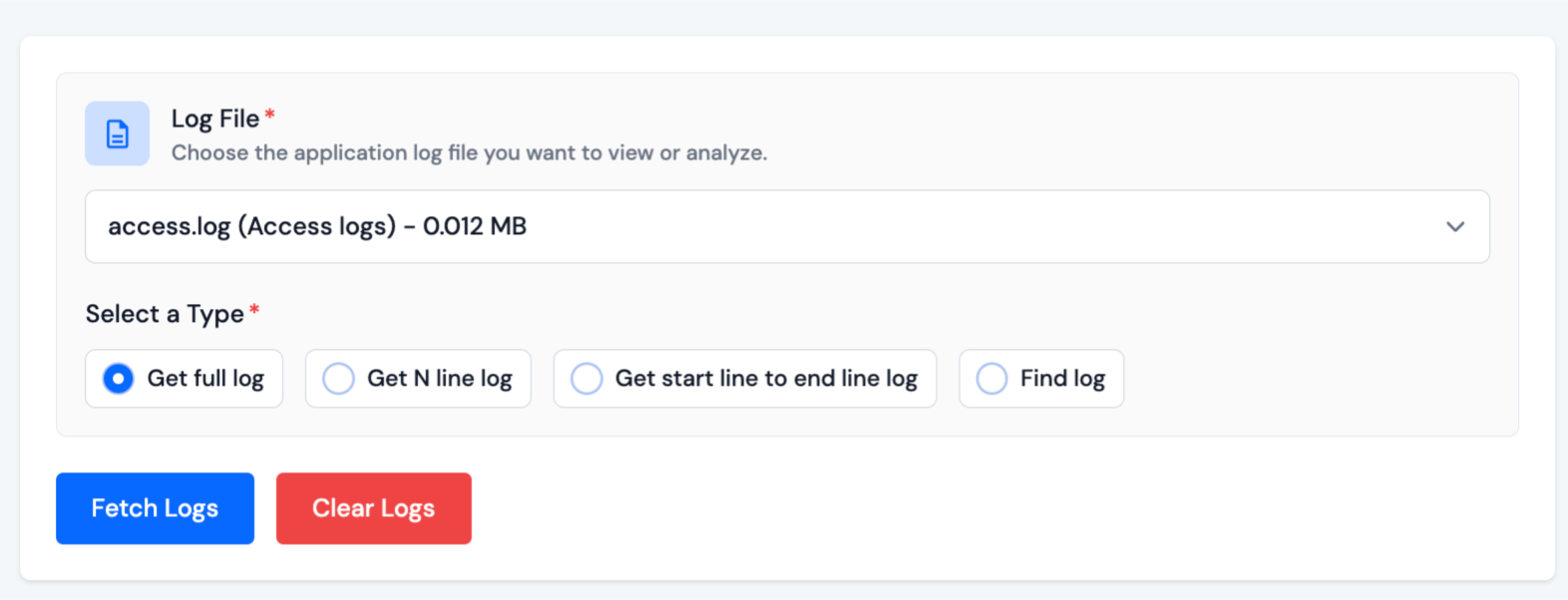
- If you need to fetch specific lines of log entries from the file, choose the Get N line log option. Once selected, click on the Fetch Logs button.
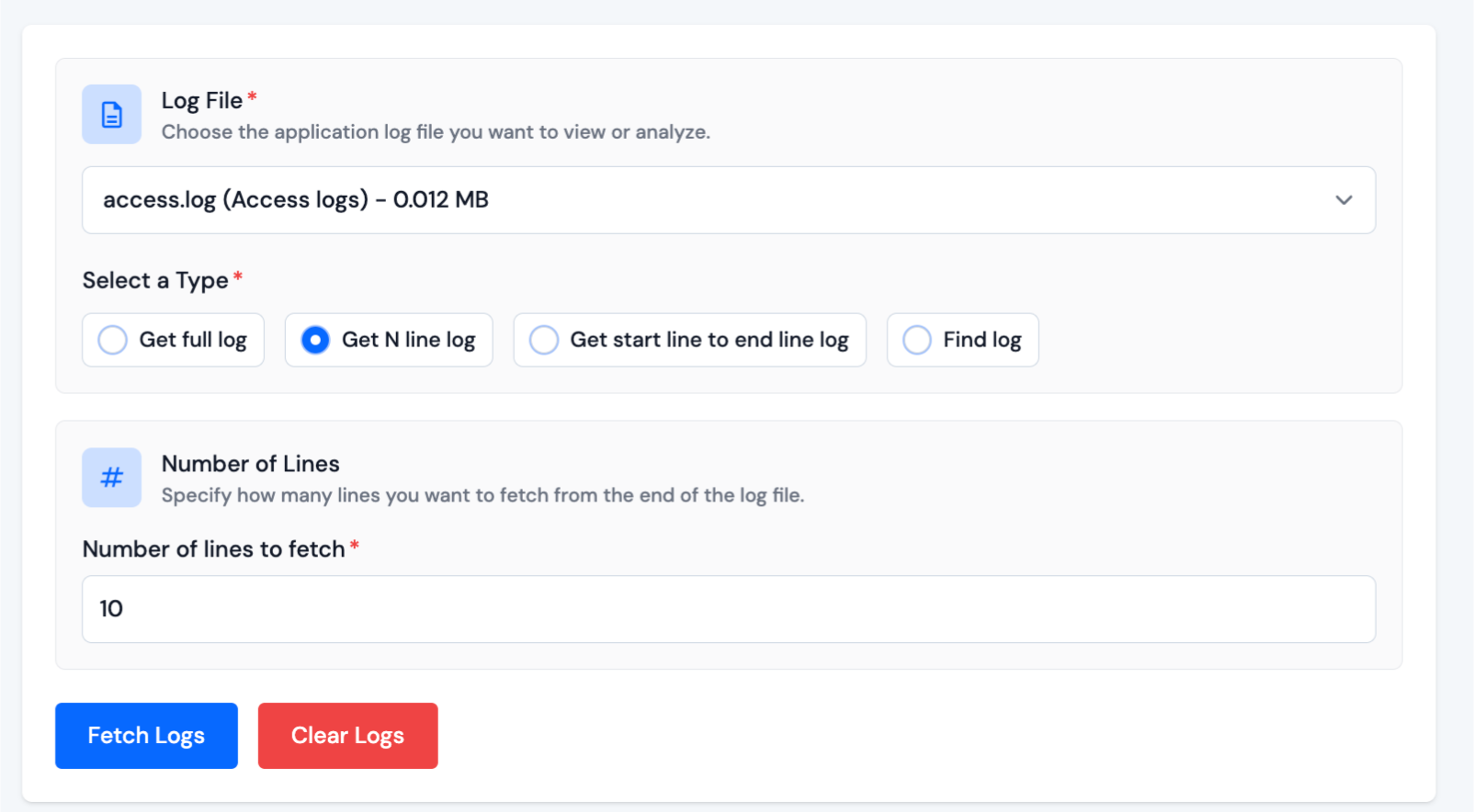
- If you want to retrieve log entries from a specified starting line to an ending line, select the Get start line to end line log option. Once selected, click on the Fetch Logs button.
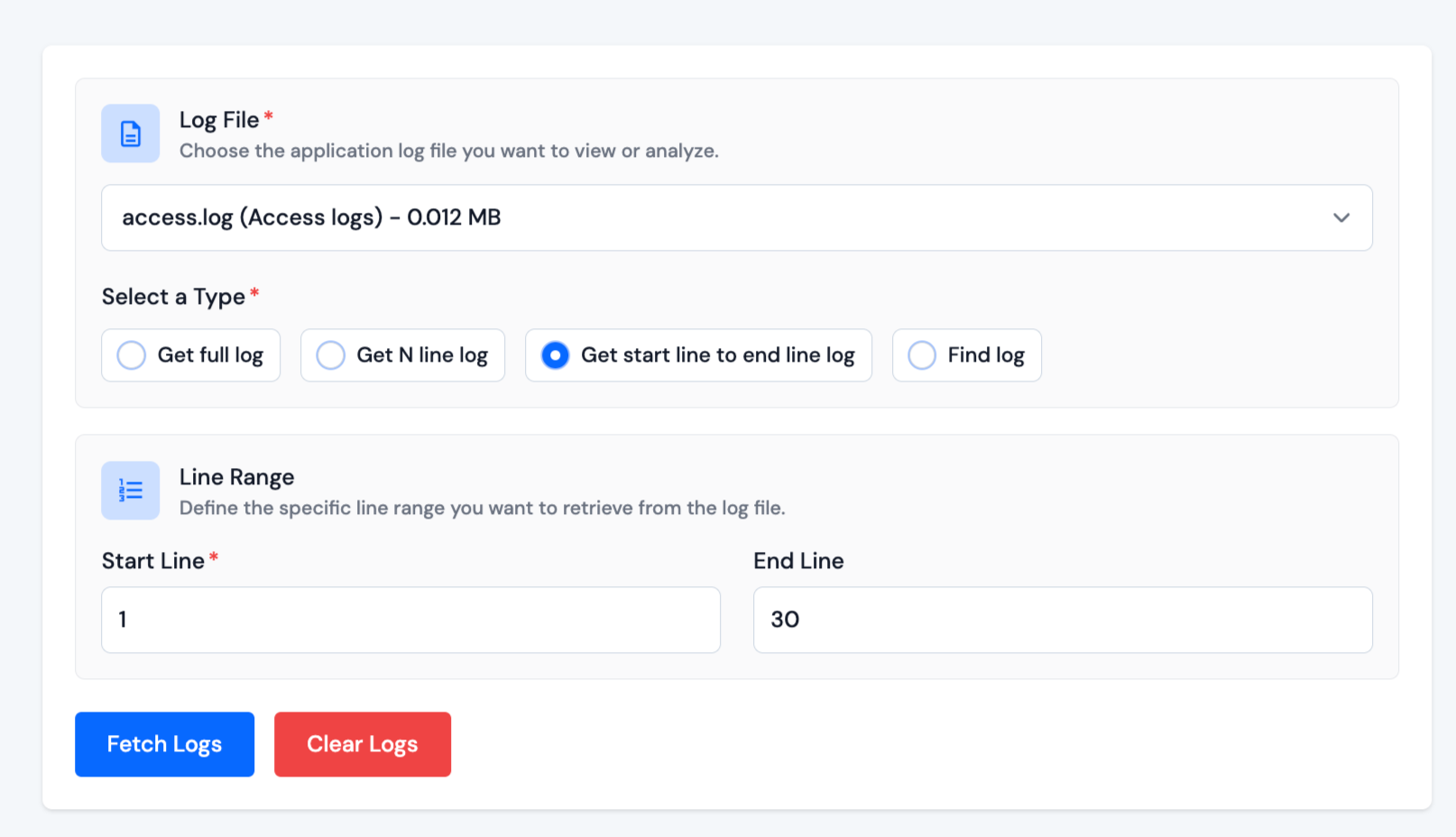
- In the Find log option, enter below details and if a matching log record is found, the system will return the remaining logs after the matching log. If no match is found, you will receive the entire log.
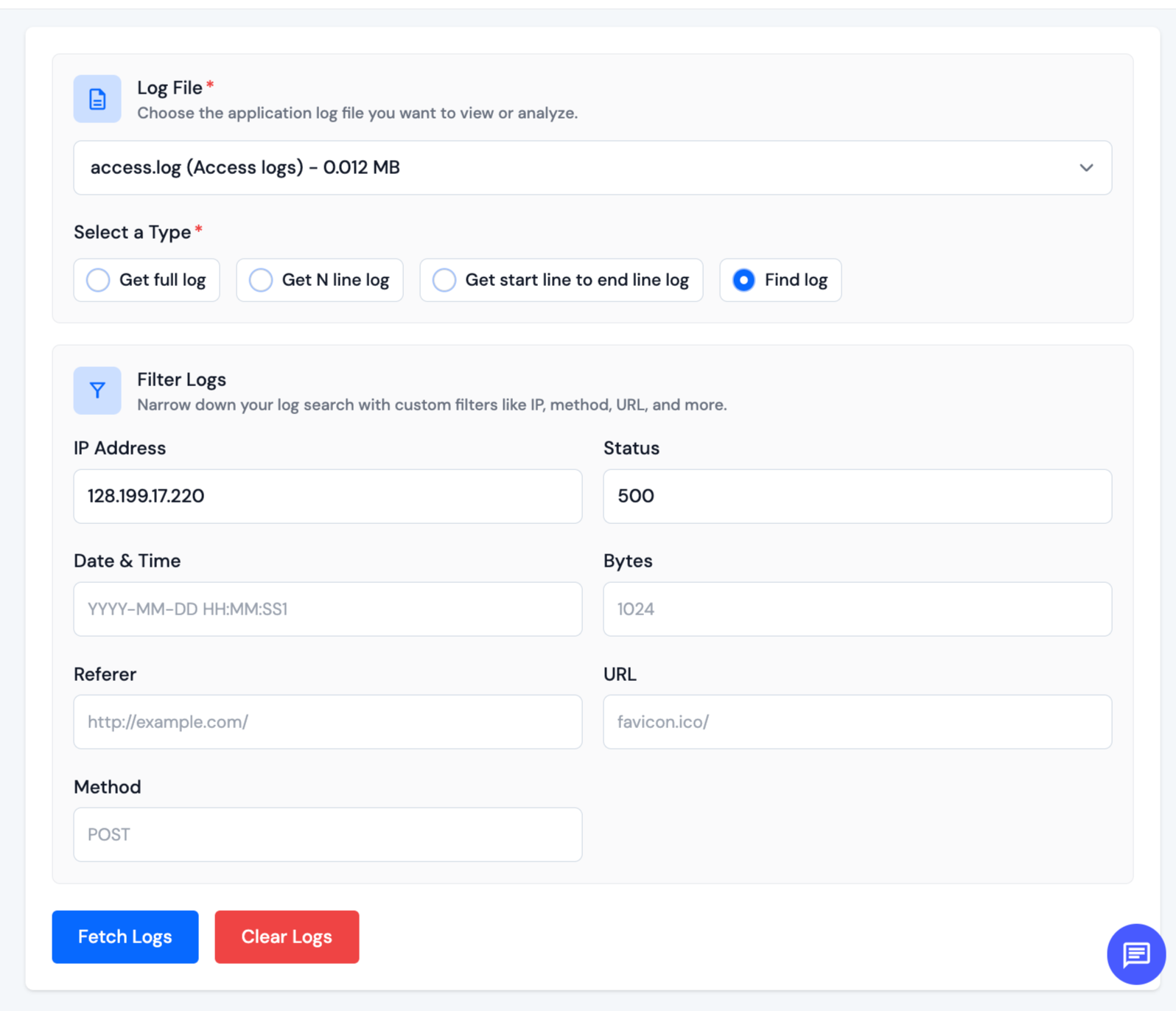
Now, you can see the logs of the selected file.
You can also Filter your logs, Download, Highlight, or Copy Log entries for better searching and sharing.
